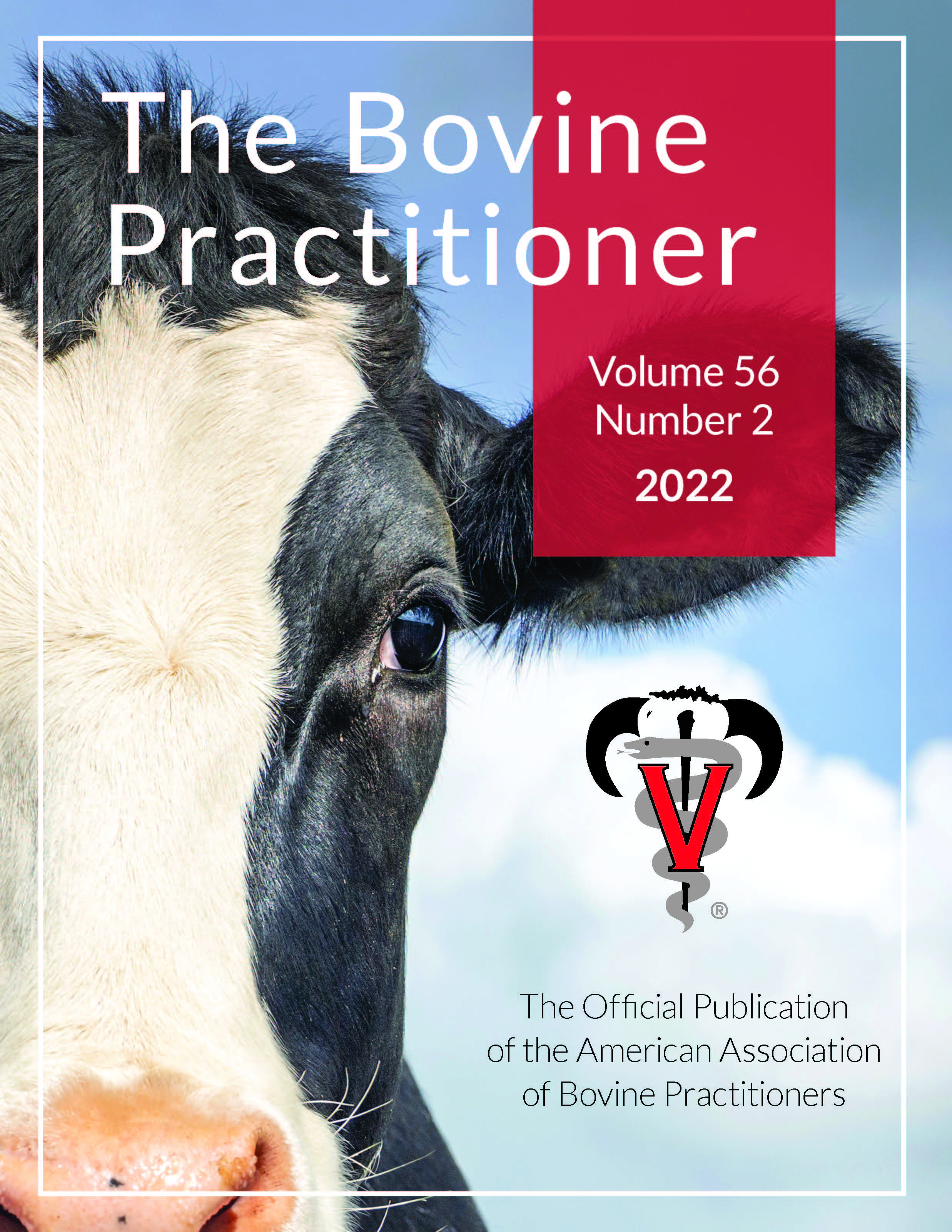Survey of veterinary involvement in cattle health and production record-keeping on U.S. cow-calf operations
DOI:
https://doi.org/10.21423/bovine-vol56no2p2-37Keywords:
beef, survey, veterinarian, cow-calf, VCPRAbstract
The objective of this study was to identify factors associated with veterinary involvement in cattle health and production record (CHPR) management on U.S. cow-calf operations. We anonymously surveyed 14,294 cow-calf producers across the U.S. Multivariable logistic regression by manual forward variable selection was used to test demographic factors for association with veterinary involvement in CHPR management outcomes. A total of 3,741 (26%) responses were received, with 3,641 (97%) actively involved in cow-calf production. Of these, 2,216 of 3,486 (64%) said local veterinarians were their primary source of cattle health, treatment, and vaccination information. If available, 1,067 of 3,382 (32%) respondents would pay a veterinarian to analyze CHPR and provide management advice based on that information. Factors associated with willingness to pay a veterinarian for CHPR-keeping services include region (midwest: OR = 1.5; mountain: OR = 1.3; northeast: OR = 1.4; northern plains: OR = 1.8; southern plains: OR = 1.7; southeast: OR = 1.9; compared to west), cow-calf operation is not respondent’s primary income source (OR = 1.4; compared to being respondent’s primary income source), respondent records antibiotic treatments (OR = 1.4; compared to not recording antibiotic treatments), respondent education level (post-graduate or professional degree: OR = 1.4; some college up to completed Bachelor’s degree: OR = 1.1; compared to high-school diploma or less). A meaningful number of respondents were willing to pay a veterinarian for CHPR management services depending on region, income source, antibiotic record use and education level.






